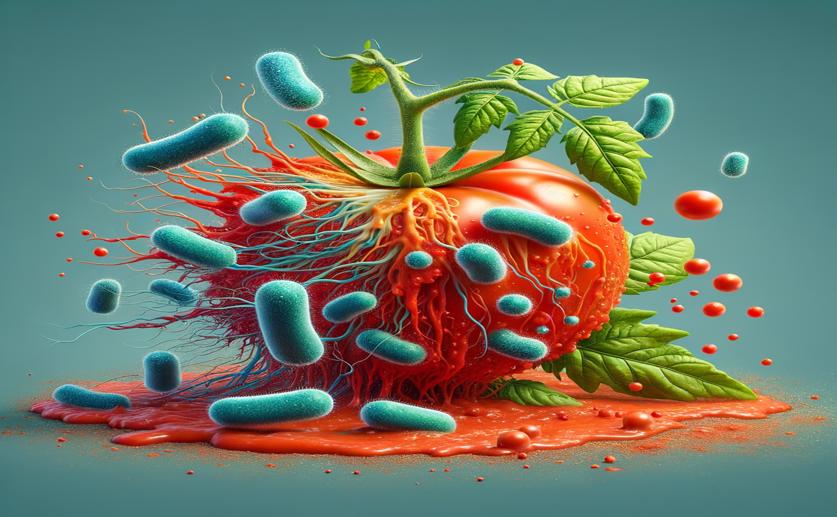
How a Bacterial Protein Weakens Tomato Disease Resistance
Jenn Hoskins
7th August, 2024

Image Source: Natural Science News, 2024
Key Findings
- Researchers in Wuhan, China, discovered how the bacterium Ralstonia solanacearum phylotype II strain ES5-1 overcomes resistance in the tomato cultivar Hawaii 7996
- The bacterium uses a protein called RipV2 to interfere with the plant's immune system by targeting key immune components
- Silencing the NRG1 gene in tomatoes significantly reduced the bacterium's virulence, highlighting NRG1 as a primary target of RipV2
References
Main Study
1) Ubiquitination and degradation of plant helper NLR by the Ralstonia solanacearum effector RipV2 overcome tomato bacterial wilt resistance.
Published 6th August, 2024
https://doi.org/10.1016/j.celrep.2024.114596
Related Studies
2) Ralstonia solanacearum, a widespread bacterial plant pathogen in the post-genomic era.
3) Pathogenomics of the Ralstonia solanacearum species complex.
4) Taxonomy and Phylogenetic Research on Ralstonia solanacearum Species Complex: A Complex Pathogen with Extraordinary Economic Consequences.



 6th August, 2024 | Greg Howard
6th August, 2024 | Greg Howard